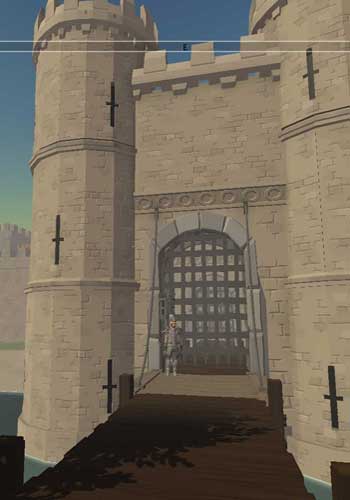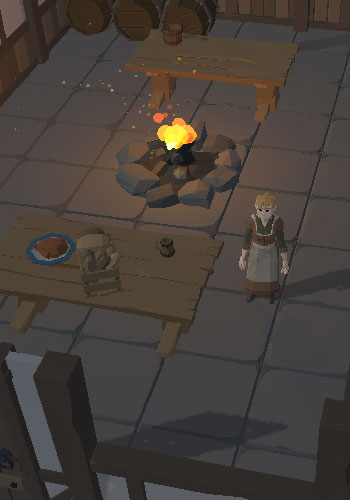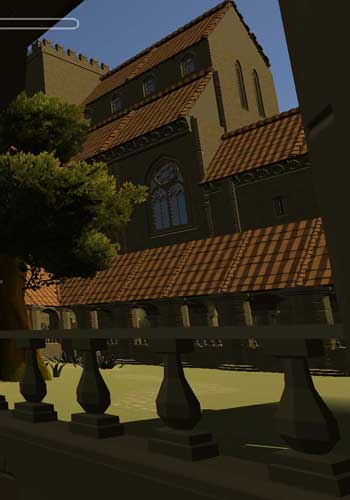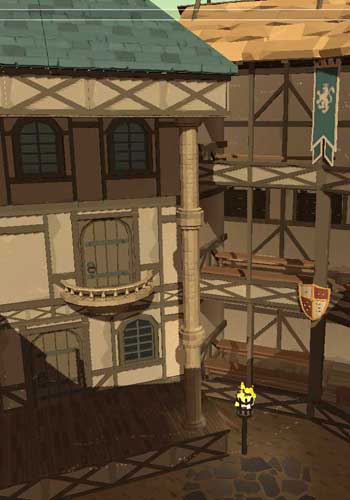New Foundations
907
According to medieval accounts the abbey for nuns was founded at Romsey by Edward the Elder in this year.
910
The abbey of Cluny was founded by William I, Duke of Aquitaine (d.918). The abbry became founding member of a new Order of Monks known as the Cluniacs. All of Cluny's daughter houses sent money back to the abbey and it became very rich.
964
At the bidding of St. Dunstan Benedictine monks moved from the Abbey of Abingdon to Winchester. Work began on a new Saxon church on the site.
972
Consecration of Peterborough Abbey
Dunstan, the Archbishop of Canterbury, and Oswald, the Archbishop of York, consecrated the abbey at Peterborough in the presence of King Edgar
983
Oswald founded a Benedictine monastery at Worcester dedicated to St. Mary the Virgin. Oswald became bishop of Worcester upon the recommendation of Dunstan.
999
Bishop Aldhun, the first Bishop of Durham, consecrated a cathedral at the location where the remains of St. Cuthbert had been relocated to. The remains were at Lindisfarne and were moved because of the danger of Viking raids.
1040
Earl Leofric builds a new Minster on the site of older religious buildings at Much Wenlock.
1048
Aldred, bishop of Worcester refounded a monastery at Gloucester. A monastery had already been founded at Gloucester in 681 by Ostric.
Destruction by the Danes
 series of Viking raids beginning in 802 resulted in the destruction of the monastery at
Iona and the murder of many of the people there. The Vikings repeatedly invaded Britain
looting the churches and monasteries for their riches and killing the monks. Monastic
life in Britain almost completely died out during the period of the Viking raids and it
wasn't until the end of Alfred the Great's reign that things began to improve.
series of Viking raids beginning in 802 resulted in the destruction of the monastery at
Iona and the murder of many of the people there. The Vikings repeatedly invaded Britain
looting the churches and monasteries for their riches and killing the monks. Monastic
life in Britain almost completely died out during the period of the Viking raids and it
wasn't until the end of Alfred the Great's reign that things began to improve.

Destruction key dates
802
Vikings raid Iona
The monastic community founded by St. Columba on the tiny island of Iona off the west coast of Scotland was attacked by the Vikings. The Vikings returned in 806 killing over sixty of the people living there.
807
Vikings raid island of Inishmurray
The monastic community on the tiny and remote island off the north west coast of Ireland was attacked by the Vikings.
814
Viking attacks
The monastery on the island of Noirmoutier just to the south of the River Loire's mouth was attacked.
Archbishop Dunstan
During the reign of King Edgar (944-975) Dunstan the Archbishop of Canterbury, a Benedictine monk himself, restarted the population of the monasteries. Situated mainly in the south of England these new monasteries included Glastonbury, Ely, Christ Church and Bury St. Edmunds. The new monasteries followed the Rule of St. Benedict.
A timeline of key events in the life of Dunstan. Showing date and Dunstan's age.
943 (Age 18)
Dunstan and Glastonbury
Dunstan moved to Glastonbury where he placed the monastery under the rule of the Benedictine Order and became the abbot there.
956 (Age 31)
Dunstan sent into exile
Eadwig sent Dunstan into exile. The reason for this is that Dunstan had caught Eadwig and Aelgifu together before they were married and at a time when Eadwig should have attended an important meeting. Dunstan must have upset Eadwig at this point and was sent into exile.
959 (Age 34)
Edgar becomes King of England (Oct 1)
At the death of Eadwig, Edgar became King of England. He appointed Dunstan as Archbishop of Canterbury.
964 (Age 39)
Benedictines at Winchester
At the bidding of St. Dunstan Benedictine monks moved from the Abbey of Abingdon to Winchester. Work began on a new Saxon church on the site.
972 (Age 47)
Consecration of Peterborough Abbey
Dunstan, the Archbishop of Canterbury, and Oswald, the Archbishop of York, consecrated the abbey at Peterborough in the presence of King Edgar.
975 (Age 50)
Edward becomes king (July)
Edward, the eldest son of Edgar, became King of the English at the age of fourteen when his father died. Dunstan became his guardian.
983 (Age 58)
Monastery at Worcester
Oswald founded a Benedictine monastery at Worcester dedicated to St. Mary the Virgin. Oswald became bishop of Worcester upon the recommendation of Dunstan
William the Conqueror
William the Conqueror brought many followers with him from Normandy including religious people and church builders. The new king wanted to show his gratitude to God for his successful conquest of England, and the Saxon monasteries may not have been following the strict rule of St. Benedict as he would have expected. As they had done back in Normandy, the Normans started building new monasteries and they became loyal to William. The old Saxon buildings were demolished and work began on new modern churches. William held a Benedictine monk called Lanfranc in high regard and he was elevated to the position of Archbishop of Canterbury.
Across Europe many monasteries were founded during the period of the First Crusade.
New Foundations
907
According to medieval accounts the abbey for nuns was founded at Romsey by Edward the Elder in this year.
910
The abbey of Cluny was founded by William I, Duke of Aquitaine (d.918). The abbry became founding member of a new Order of Monks known as the Cluniacs. All of Cluny's daughter houses sent money back to the abbey and it became very rich.
964
At the bidding of St. Dunstan Benedictine monks moved from the Abbey of Abingdon to Winchester. Work began on a new Saxon church on the site.
972
Consecration of Peterborough Abbey
Dunstan, the Archbishop of Canterbury, and Oswald, the Archbishop of York, consecrated the abbey at Peterborough in the presence of King Edgar
983
Oswald founded a Benedictine monastery at Worcester dedicated to St. Mary the Virgin. Oswald became bishop of Worcester upon the recommendation of Dunstan.
999
Bishop Aldhun, the first Bishop of Durham, consecrated a cathedral at the location where the remains of St. Cuthbert had been relocated to. The remains were at Lindisfarne and were moved because of the danger of Viking raids.
1040
Earl Leofric builds a new Minster on the site of older religious buildings at Much Wenlock.
1048
Aldred, bishop of Worcester refounded a monastery at Gloucester. A monastery had already been founded at Gloucester in 681 by Ostric.
Page Navigation








